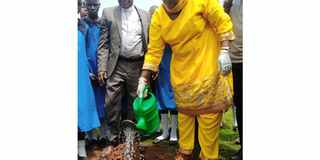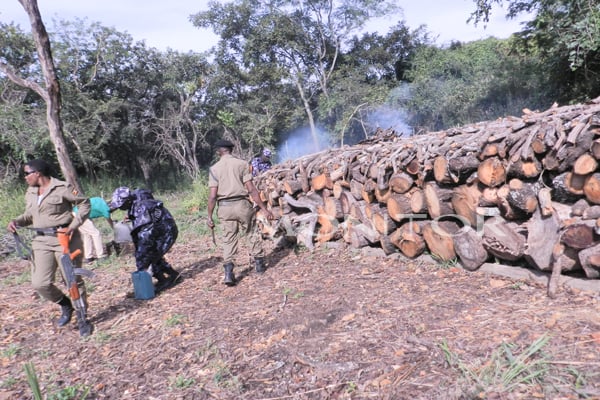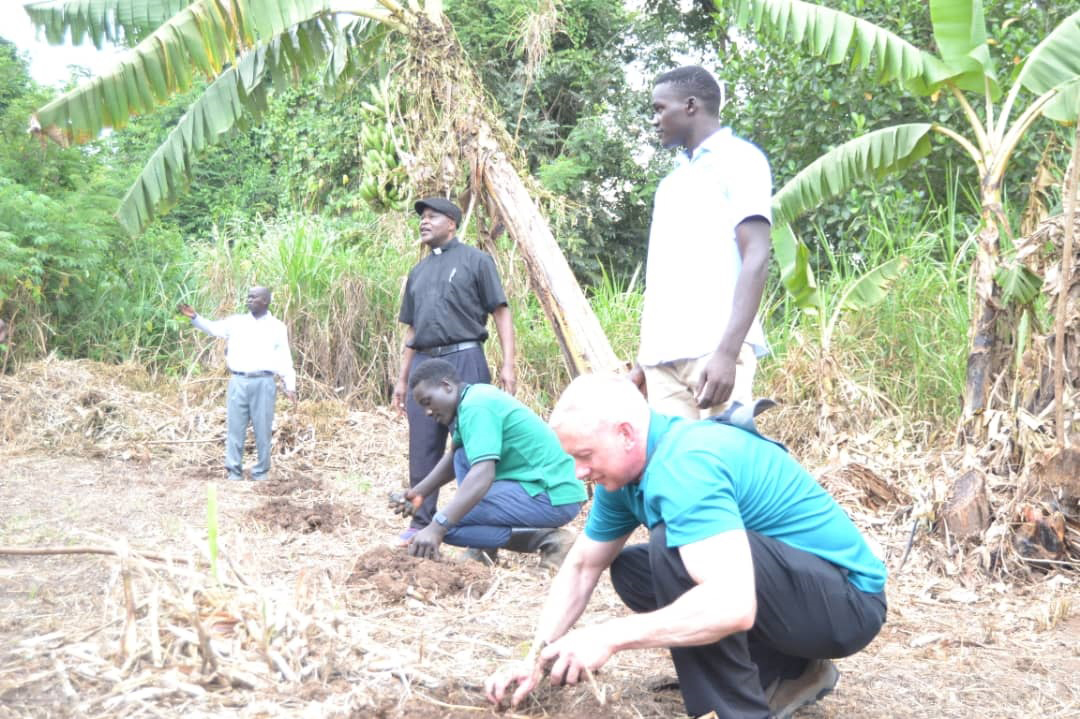Prime
Districts embrace tree planting drives to restore degraded forests

Ms Proscovia Acham, the Kwania Deputy Resident District Commissioner waters a tree she planted at Aduku Boarding Primary School on May 20. PHOTO /BILL OKETCH
What you need to know:
Communities are being empowered to plant more trees under the Development Response to Displacement Impacts Project
Districts in partnership with government ministries, agencies, and departments have stepped up tree-planting campaigns to restore the depleting forest cover in the area.
The intervention follows decades of losing thousands of hectares of forests each year, exacerbating the disastrous effects of erratic weather patterns.
“This unprecedented climate change is real, and it’s happening because of the loss of tree cover. So we call upon every Ugandan to join hands so that we get back our forest cover to the levels of 1990 by 2030,” Mr Patrick Hans Igulot, the regional forestry officer at the Ministry of Water and Environment, told Daily Monitor this week.
Mr Igulot said the country has about 12.4 per cent of land area covered by forests down from 24 per cent in 1990.
The National Forestry Authority aims at ensuring that 24 percent of the country’s territory is covered with trees by 2040.
In Kwania District, the deputy chief administrative officer, Mr Bernard Olupot, said they are planning to introduce an ordinance to reinforce the National Forestry and Tree Planting Act of 2003 to make tree planting compulsory at household level.
In Koboko District, communities are being sensitised to raise nursery beds and plant more trees under the Development Response to Displacement Impacts Project (DRDIP).
“There are many woodlots which have been established in our sub-counties to conserve the environment,” Mr Mambu Asirafu, the district chairperson, said.
Mr Jasper Otimoi, the Apac District environment officer, said they have used private tree planters to restore degraded central forest reserves such as Maruzi Hill, Aminteng and Aboi.
In Barjobi Sub-county, Otuke District, authorities have allocated Shs2 million towards tree planting campaigns this financial year.
“We are slowly but surely restoring the lost forest cover. Nearly all the households in the area are planting trees. For instance, I have planted 15 hectares. My neighbours have been encouraged to plant trees because they see me selling poles,” Mr Richard Ojok Arucha, the LC3 chairman, said.
In refugee hosting districts such as Obongi, the Office of the Prime Minister (OPM) is supporting the implementation of several activities to reduce the pressure on natural resources.
“The pressure on the environment is too much. During the mango season, refugees flood the district headquarters to pick mangoes and you cannot stop them lest they feel discriminated. It is easier to stop a national than a refugee,” Mr Charles Ouma, the chief administrative officer, said.
He said the government has increased services to cater for the growing population.
According to Mr Ouma, the refugee population in the district is about 128,000 while that of the nationals is 47,000.
“Now the services that would have been for 47,000 people are being shared and serving additional 128,000. That is why OPM designed to have environmental management component under DRDIP to ensure that as we support refugees, we don’t compromise the interest of the future generation,” Mr Ouma said.
He added that the OPM helped refugee host communities to establish woodlots.
“The impact is that they are conserving the environment at the same time teaching the rest of the nationals that they can have woodlots,” Mr Ouma added.
Mr Justus Biferamunda, the community facilitator of Iranda-Nyakatiiti watershed in Kiryandongo District, said they will plant 125 acres of trees within five years.
“In the first year, we were supposed to cover 60 acres, second (30 acres), third (20) acres, fourth (10) and fifth (five) acres,” he said.
Mr Robert Bogere, a senior water officer at the Ministry of Water and Environment, said under the integrated water management development project, a government of Uganda-World Bank-funded intervention, deforested landscapes in northern and eastern regions will be restored.
CLIMATE CHANGE EFFECTS
In 2020, more than one million people across the country were severely affected by floods, with 300,000 struggling to find food, clean water, shelter and medical care, according to data from the Ministry of Disaster Preparedness and Refugees. In Amolatar District, at least 6,217 households were affected by floods caused by the rising water levels on Lake Kyoga in 2021. Nalibwoyo, Acii Awelo, Etam, Arwotcek, Agwingiri, and Akwon sub-counties were the most affected. Data from the district disaster department shows that the number of crops destroyed per acreage by the disaster stood at 6,733. These include traditional crops such as millet, maize, simsim, and beans.




